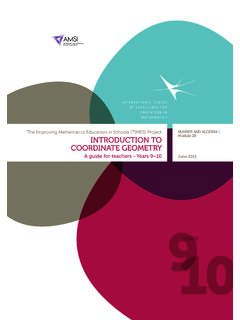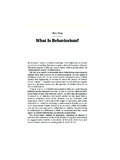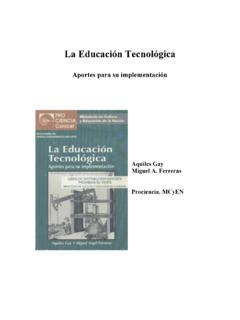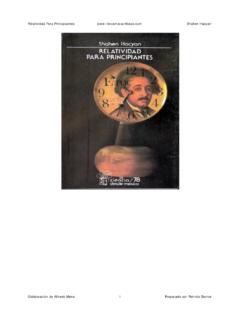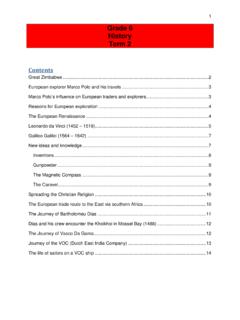Transcription of A guide for teachers – Years 11 and 12 - Home - AMSI
1 A guide for teachers Years 11 and 121 2 3 4 5 6 7 8 9 10 11 12 Maths delivers!Braking distanceFor teachers of Secondary Mathematics The University of Melbourne on behalf of the Australian Mathematical Sciences Institute (AMSI), 2013 (except where otherwise indicated). This work is licensed under the Creative Commons Attribution-NonCommercial-NoDerivs Unported License. Mathematical Sciences InstituteBuilding 161 The University of MelbourneVIC 3010 Email: : Dr Jane Pitkethly, La Trobe UniversityIllustrations and web design: Catherine Tan, Michael ShawMaths delivers! Braking distanceDr Michael Evans AMSII ntroduction..4 The equations of motion for constant acceleration..5 The stopping-distance formula..9 Speed while braking..10 Thinking time..16 Answers to exercises..18mathsdelivers!Braking distanceIntroductionThese notes accompany the videoBraking that a car is travelling on a straight road.
2 The driver sees a problem on the roadahead and so brakes suddenly to stop. Thestopping distanceis the distance that the cartravels from the moment that the brakes are applied to the moment that the car is also called thebraking the car is initially travelling atum/s, then the stopping distancedm travelled by thecar is given byd= will see later in these notes how this formula is formula means that the stopping distance is directly proportional to the square ofthe speed of the car at the instant the brakes are applied. That is,d refer the reader to the TIMES moduleProportion( Years 9 10). So in general, thestopping distancedfrom initial speeduis given by a formula of the formd=ku2,where the constant of proportionalitykdepends on the units being happens if the initial speed of the car is increased by 10%?This doesn t seem much for example, increasing your speed from 50 km/h to 55 km/his a 10% increase.
3 To see the effect, we takeu=1 and sod=k. A 10% increase givesu= , and sod=( )2k= distance 5 Similarly, if we increase the speed by 20% (for example from 50 km/h to 60 km/h), thend=( )2k= summary: A 10% increase in the speed causes a 21% increase in the stopping distance. A 20% increase in the speed causes a 44% increase in the stopping distance. Ana% increase in the speed causes a(2a+a2100)% increase in the stopping 1 Show that ana% increase in the speed causes a(2a+a2100)% increase in the increase in stopping distance is only one aspect of the problem with apparentlysmall increases in speed, as illustrated by the following diagram. In these notes, we willinvestigate various aspects of braking showing impact speeds at 45 equations of motion for constant accelerationWe begin with the equations of motion for constant acceleration.
4 In this section, wewill assume a consistent set of units. To start with, this will be themks system(metres,kilograms, seconds). Common usage will force us to depart from this later in the maths delivers!The five equations of motionThese equations are for a particle moving in a straight line with a constant history of these equations is not absolutely clear, but we do have some the 14th century, scholastic philosophers at Merton College, Oxford, studied motionwith constant acceleration and deduced what is now known as theMerton rule:An object with constant acceleration travels the same distance as it wouldhave if it had constant velocity equal to the average of its initial and the 17th century, Galileo Galilei (1564 1642) and others discovered that, in a void, allfalling objects have the same constant acceleration. Newton (1642 1727) and Leibniz(1646 1716) built on these ideas in developing the concept of the the following: uis the initial velocity of the particle vis the final velocity of the particle ais the constant acceleration of the particle tis the time of motion xis the distance equations are as follows:1v=u+at2x=ut+12at23x=(u+v)t24v2= u2+2ax5x=vt Each of the five equations involve four of the five variablesu,v,a,t,x.
5 If the valuesof three of the variables are known, then the remaining values can be found by using twoof the can use calculus to help derive these five distance 7 The first equation of motionWe assume that x(t)=a, whereais a constant, and thatx(0)=0 and x(0)=u. Integrating x(t)=awith respect totfor the first time givesv(t)= x(t)=at+ (0)= x(0)=u, we havec1=u. Hence, we obtain the first equation of motion:v(t)=u+ second equation of motionIntegrating again givesx(t)=ut+12at2+ (0)=0, we havec2=0. This yields the second equation of motion:x(t)=ut+ third equation of motionWe start with the second equation of motion:x(t)=ut+12at2=2ut+at22=ut+t(u+at) first equation of motion isv=u+at. Substituting, we havex(t)=ut+vt2=(u+v) fourth equation of motionFrom the first equation, we havet=v ua. Substituting this into the third equation givesx=(u+v)t2=(u+v)(v u)2a=v2 to makev2the subject produces the fourth equation:v2=u2+ maths delivers!
6 The fifth equation of motionFrom the first equation, we haveu=v at. Using the third equation, we obtainx=(u+v)t2=(v at+v)t2=2vt at22=vt 12at2,which is the fifth these notes, we talk about the speed of the vehicle rather than the velocity. The speedis the magnitude of the velocity. We will always be considering positive velocity, and sothe terms can be used interchangeably. However, when you apply the brakes, the forceexerted by the brakes is acting in the opposite direction to the motion, and hence so isthe to stopping distanceWhen we are discussing the motion of a car after the brakes are applied, we are interestedin two questions in particular:1 How far in metres does the car go before stopping?2 What is the speed of the car in km/h after the car has travelled a given number ofmetres?The second question is relevant for finding the speed that you would hit an object afterbraking a given distance from is clear from this discussion that we will use the fourth equation of motion, since thisis the equation that connects speed and distance travelled:v2=u2+ distance 9 The stopping-distance formulaWe now consider the first question:How far in metres does the car go before stopping?
7 We use the fourth equation of motion,v2=u2+2ax. When the car stops, we havev=0,and so0=u2+ forx, we havex= are still working with the mks system. In this situation that means we are workingwith metres and seconds. The corresponding units for velocity (speed) will be metresper second (m/s) and for acceleration acceleration is in the opposite direction to the motion, and so the acceleration isnegative. The following formula only relates the magnitudes of the distance travelled,initial velocity and acceleration. This is a slight misuse of notation, but it is unambiguousfor our simple formula for thestopping distancedisd= the following table, the stopping distance is obtained by measurement from four trialswith four different cars. The brakes are applied when the car is travelling at 100 deceleration is then calculated from the formulaa= will go through the details for the first calculation.
8 We first note that100 km/h=100 10003600m/s=2509 the first trial, the measured stopping distance isd= m, and the speed when thebrakes are applied isu=2509 m/s, and soa similar calculations give us the following maths delivers!Measured stopping distances from 100 km/hCar typeStopping distance (m)Deceleration (m/s2)Type 2 Verify the values given in the table for the deceleration of the cars of type B and can see from the table that quite a sensible choice of value forais 10 m/s2. In fact,a constant deceleration of 10 m/s2provides a good model for this context. The formulafor the stopping distancedthen becomesd= while brakingWe now turn to our second question concerning the motion of a car after the brakes areapplied:What is the speed of the car in km/h after the car has travelled a given number ofmetres?We again use the fourth equation of motion,v2=u2+2ax.
9 We makevthe subject bytaking the square root of both sides. We are only interested in the positive root, and sov= u2+ we takea= 10 m/s2, we havev= u2 of change of speedThe rate of change ofvwith respect to time is the acceleration, which is 10 m/s2inour case. We are interested in the rate of change of the velocity with respect to distancetravelled:dvdx= 202pu2 20x= distance 11 This tells us that the rate of decrease ofvwith respect toxis inversely proportional tothe speedv. That is,Rate of decrease of speed with respect to distance from 100 km/hWhen talking about braking in everyday life, we talk about speed measured in kilometresper hour and distance travelled in metres. Initially we will stay in the mks system andcarry out conversions when a car braking abruptly from an initial speed of 100 km/h, we takea= 10 m/s2andu=100 km/h=2509m/s.
10 We take the positive square root, and sov= (2509)2 20x=19 2502 order to get a feel for this formula, we ask the following the formula derived above to find the braking distance of a car travelling at 100 , we have0=19 2502 forx, we find that the braking distance isx=25021620=312581 is as expected. We now look at the speed of the car at various distances mea-sured from where the car first brakes. We are again considering braking from a speedof 100 km/h. We usev=19p2502 example, at a distance ofx=5 metres, we havev=19 2502 1620 5=40p349 change this to kilometres per hour by multiplying by36001000:v=40p349m/s maths delivers!The following table gives the speed of the car at each five-metre of car while braking from 100 km/hDistance travelled (m)Speed (km/h) know that the car stops at metres, but we can see from the table that the car isstill going at km/h at 35 now give a formula for the speed of the car in kilometres per hour in terms of the dis-tance covered in metres.
